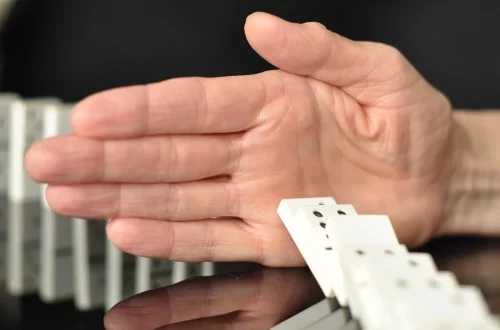
Essential Books to Guide Your Child Through Toilet Training
Toilet training is a significant milestone in a child’s development, marking the transition from diapers to independence. This phase can be both thrilling and challenging for parents and caregivers. It often comes with a mix of excitement and anxiety as families navigate this essential rite of passage. Children, too, experience a range of emotions during this time, from curiosity and pride to frustration and resistance.
Parents often wonder when to start the training process and what methods to use. Every child is unique, and what works for one may not work for another. Therefore, understanding the various approaches and the experiences of other families can provide invaluable insights. The right resources can help guide both children and parents through this process, making it smoother and more enjoyable.
Books specifically designed for toilet training can play a crucial role in preparing children for this transition. They can introduce the concept in a fun and engaging way, alleviating fears and misconceptions. Moreover, these resources can empower parents to approach the subject with confidence, fostering a supportive environment for their children.
In this article, we will explore essential books that can guide your child through toilet training, providing both practical advice and comforting narratives that resonate with young readers.
Understanding the Toilet Training Process
Toilet training is more than just teaching a child to use the toilet; it involves understanding their physical and emotional readiness. Each child develops at their own pace, and recognizing the signs of readiness is crucial. These signs may include showing interest in the toilet, staying dry for longer periods, or expressing discomfort with dirty diapers.
Engaging children in conversations about using the toilet can help demystify the process. It’s important to create an open dialogue where children feel comfortable asking questions. Books can serve as excellent conversation starters, providing relatable characters and scenarios that children can identify with.
Additionally, consistency is key in toilet training. Establishing a routine can help children understand when it’s time to go. Parents should encourage regular bathroom visits, especially after meals or before bedtime. This helps in developing a connection between bodily sensations and the act of using the toilet.
Moreover, patience is essential. There will likely be accidents, and it’s important for parents to respond with understanding rather than frustration. Reinforcing positive behavior through praise or small rewards can encourage children to keep trying.
Books that focus on the toilet training process often include tips for parents on how to handle setbacks and celebrate successes. They can provide insights into common challenges and how to overcome them, making the journey smoother for both parents and children.
Engaging Stories for Young Readers
Children’s literature plays a vital role in making toilet training a fun and less daunting experience. Engaging stories can capture a child’s imagination while subtly teaching them about the process of using the toilet. These narratives often feature relatable characters who face similar challenges, allowing children to see themselves in the story and understand that they are not alone in their experiences.
Books that incorporate humor and whimsy can also alleviate anxiety. Stories that portray the toilet as a friendly and inviting place can help dispel fears that children may have. For example, a story about a brave little animal who learns to use the toilet can inspire children to take that leap themselves.
Additionally, many of these stories use interactive elements, such as flaps to lift or sounds to press, which can make reading more engaging. Children often enjoy participating in the story, which can reinforce the message and make the experience memorable.
Parents can also use these stories as opportunities for discussion. After reading, they can ask questions about the characters’ feelings or experiences, allowing children to express their own thoughts on toilet training. This encourages emotional connection and reinforces the lessons learned through the narrative.
Overall, engaging stories are a powerful tool in the toilet training process, providing entertainment while educating children about using the toilet and managing their feelings.
Practical Guides for Parents
In addition to engaging children’s books, many practical guides are available for parents navigating the toilet training journey. These books offer evidence-based strategies, tips, and techniques to help parents support their children effectively.
Parents can benefit from understanding different approaches to toilet training, such as the child-centered method, which emphasizes waiting until the child is fully ready, or the more structured approach that involves a set schedule. These guides often outline the pros and cons of each method, allowing parents to choose what aligns best with their family’s needs and values.
Moreover, practical guides typically address common concerns and challenges that parents may face. For instance, they may provide advice on how to handle accidents, encourage consistency, and deal with resistance from children. This kind of information can be invaluable, as it prepares parents for the ups and downs of the process.
Many guides also emphasize the importance of maintaining a positive and encouraging environment. They highlight the benefits of celebrating small victories and being patient during setbacks. This approach fosters a supportive atmosphere where children feel safe to express themselves and learn at their own pace.
Ultimately, practical guides serve as a roadmap for parents, equipping them with the knowledge and confidence they need to help their children succeed in toilet training.
Celebrating Milestones and Encouraging Independence
Toilet training is not just about teaching a child how to use the toilet; it’s also about celebrating milestones and encouraging independence. Each step in the process, from recognizing bodily cues to successfully using the toilet, is an achievement worth acknowledging.
Celebrating milestones helps children feel proud of their progress, reinforcing their motivation to continue. Parents can create a reward system, such as a sticker chart, to visually track achievements. This not only provides motivation but also makes the experience more interactive and fun.
Encouraging independence is equally important. As children become more comfortable with the toilet, parents can allow them to take more responsibility, such as choosing their own underwear or flushing the toilet themselves. This fosters a sense of ownership and pride in their accomplishments.
Additionally, involving siblings or other family members in the process can create a supportive network. Older siblings can model behaviors for younger ones, making the experience more relatable and less intimidating.
Furthermore, books that focus on independence and self-sufficiency can reinforce these values. Stories that depict characters successfully navigating challenges on their own can inspire children to embrace their growing autonomy.
Overall, celebrating milestones and fostering independence are key components of the toilet training journey, helping children develop a positive relationship with this essential life skill.
In conclusion, while toilet training can present its challenges, it is also a time of growth and development for both children and parents. Utilizing engaging stories and practical guides can make this transition smoother and more enjoyable. However, every child is unique, and it’s essential to adapt approaches to fit individual needs.
**Disclaimer:** This article is not intended as medical advice. For any health concerns regarding toilet training or associated issues, please consult a healthcare professional.




